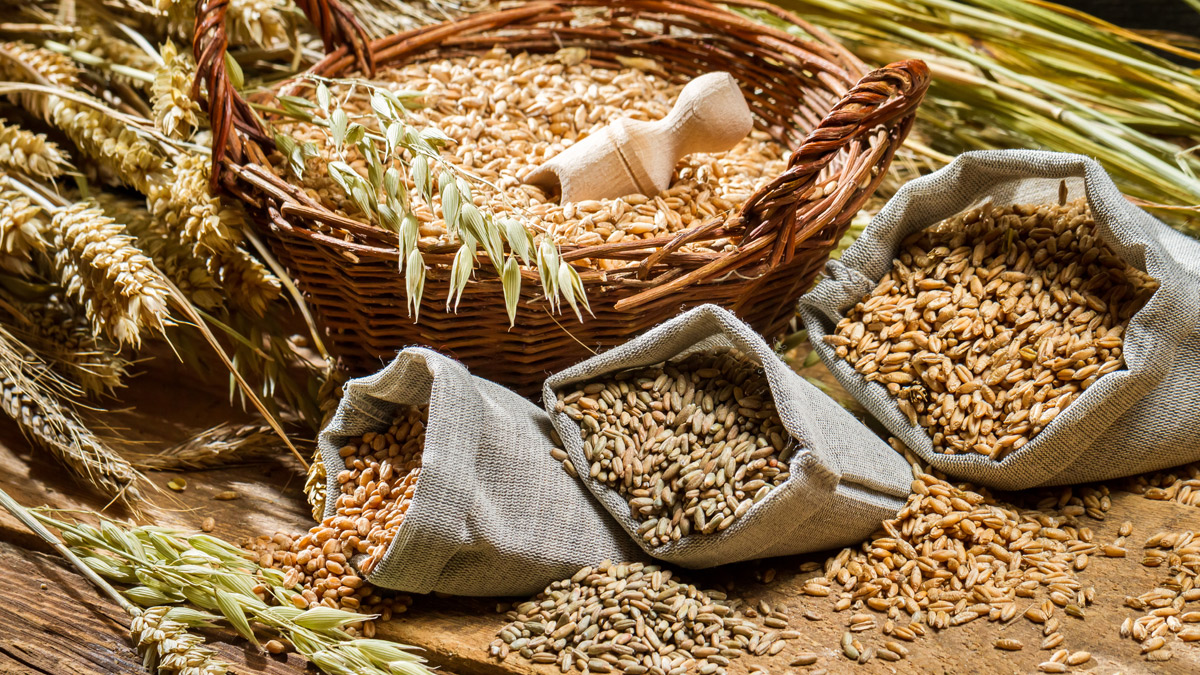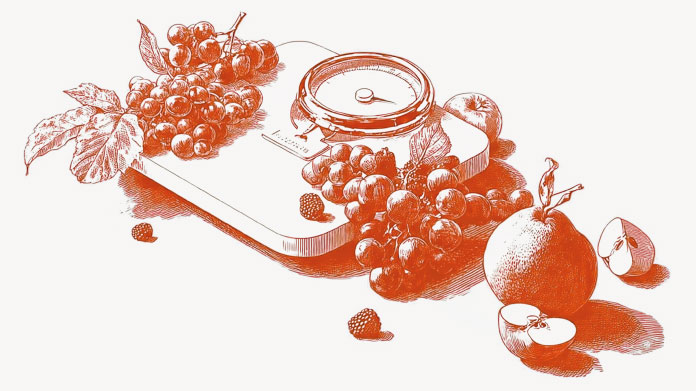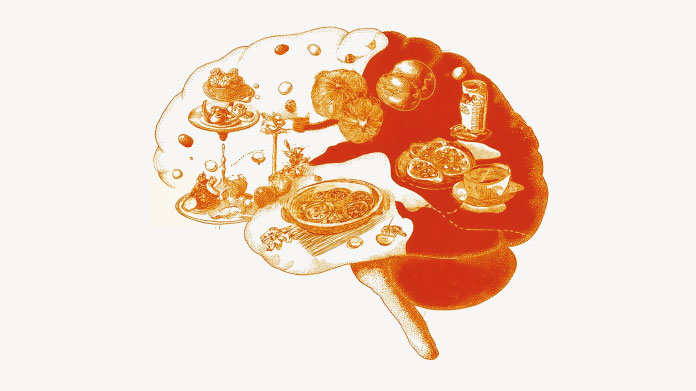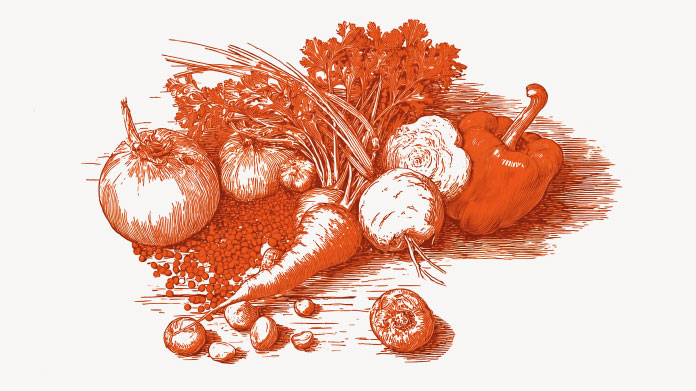10 tips for eating more fiber each day
Fibers? The active role that they play in maintaining proper digestive system function is just one of many roles that fibers play in maintaining overall health. But we’re eating less and less fiber.

Fibers are indigestible polysaccharides (which form carbohydrates) that are found in plants (fruits, vegetables, grains, and legumes). Fibers are essential to our health because they stimulate intestinal transit, boost the immune system, rebalance intestinal flora, lower cholesterol, help us feel sated, and stabilize blood sugar. We can distinguish between two types of fibers: soluble fibers dissolve in water and form a “gel,” while insoluble fibers do not dissolve, but swell, accelerating intestinal transit. Each type of fiber plays different, but complementary roles. Foods rich in fiber contain both soluble and insoluble fibers, but in varying proportions. Fresh fruits, vegetables, and legumes, for example, are richer in soluble fibers, while whole grains have more insoluble fibers.
It’s therefore best to combine both types of fibers (consuming more soluble fiber) to meet our needs for fiber. That, however, isn’t as easy as it sounds, and we’re not consuming enough fiber (about 15 g per person per day, although recommendations specify 25 to 30 g of fiber per day, 10 to 15 g of that amount as soluble fibers). Here are 10 tips for ensuring you get enough fiber.
Eat fruits and vegetables with their skins
Potatoes, pears, zucchini, and cucumbers: whenever you can, eat fruits and vegetables with their skins, which are rich in fiber. Always wash fruits and vegetables thoroughly, or buy organic produce.
Eat fruits and vegetables whole
Fruits and vegetables are by definition fiber-rich foods. But they provide more fiber if you prepare them whole instead of stewed, pureed, or in a soup.
(Re)discover legumes
Lentils, chickpeas, fava beans, and split peas: legumes, are especially rich in fiber, but we too often ignore them, to our detriment. Try to include legumes in your menu at least once a week.
Eat fruits and vegetables at every meal
Eating fruits and vegetables with every meal is essential for meeting our need for fiber. But it’s equally essential for ensuring that we get enough vitamins and minerals. Don’t forget the recommendations of the National Nutrition and Health Program (PNNS in French): 5 fruits and vegetables per day!
Choose whole wheat bread
Forget about white bread, and be sure to buy whole wheat bread, which is rich in insoluble fibers. You can find whole wheat bread at any bakery or prepare it at home.
Prepare cakes with less-refined flour
Refined flour (T55) has little nutritional value as it contains very little fiber. Replace refined flour entirely or partially with semi-whole or whole flour (T150) when you prepare crêpes, cakes, or pies (you can mix several flours).
Snack on dried fruits
Instead reaching for fatty or sugary snacks or other foods without nutritional value, think of dried fruits (apricots, figs, pears, dates) when you feel a little hungry.
Mix nuts into salads or other foods
Nuts (such as almonds) provide fiber. You can grind nuts and add them to cakes or eat them whole with cheese, fruits, and other healthy foods.
Try whole wheat pastas and whole grain rice
Paradoxically, modern supermarkets now offer more and more traditional whole wheat pastas and whole grain rice, which provide healthy amounts of fiber.
Consider rolled oats, wheat germ, or bran
These three items are all rich in fiber and you can use them in almost anything: in salads, yogurt, smoothies, soups, and vegetable stir fries.
Keywords
48 Days
fairly quick service
fairly quick service. Decent prices
Vyril A
50 Days
Always pleased with SuperSmart products and service
Product always arrives timely and in good shape. Company is easy to work with. Website is user-friendly.
Diane
51 Days
The h pylori supplement has helped my…
The h pylori supplement has helped my digestive issues. I was diagnosed with h pylori more than once. Also was hospitalized with h pylori several times. Even after taking prescription meds for this condition I still had ongoing digestive issues. So I decided to give this product a try. It has helped with the bloating and inflammation in my stomach and chest. So I gave it a 4 star rating. It helps to calm the pain in my stomach and also acid reflux pains. It is a good product and I would recommend.
Sandra
54 Days
Great Products Great Customer Service
Have purchased from this company many times. A package arrived damaged and with an 1 email to customer service it was fixed. Thank you for great products and great customer service
jd
57 Days
Above and beyond customer service
Above and beyond customer service! Bravo. Love SuperSmart.
Isabella Jimenez
61 Days
Still great
Still great! I have given my opinion on this several times and it remains the same.
WRIGHT Connie
64 Days
I have been very happy with all my…
I have been very happy with all my supplements from supersmart
kirstin Torres
64 Days
Quality supplements
Quality supplements
Edward P
72 Days
Good products at a good price.
Good products at a good price.
HELLAND Edward
74 Days
Above and beyond!
Any will be taken care of by SuperSmart staff.
DOMINIC
77 Days
Quality 3rd party tested products…
Quality 3rd party tested products without fillers
Edward P
78 Days
great products and prices..
great products and prices..
Marie
86 Days
product delivered on time and in good…
product delivered on time and in good shape
Jack
90 Days
Great supplements at great prices
Great supplements at great prices
cynthia b
97 Days
It was easy and timely,
It was easy and timely,
GEORGE Verne



